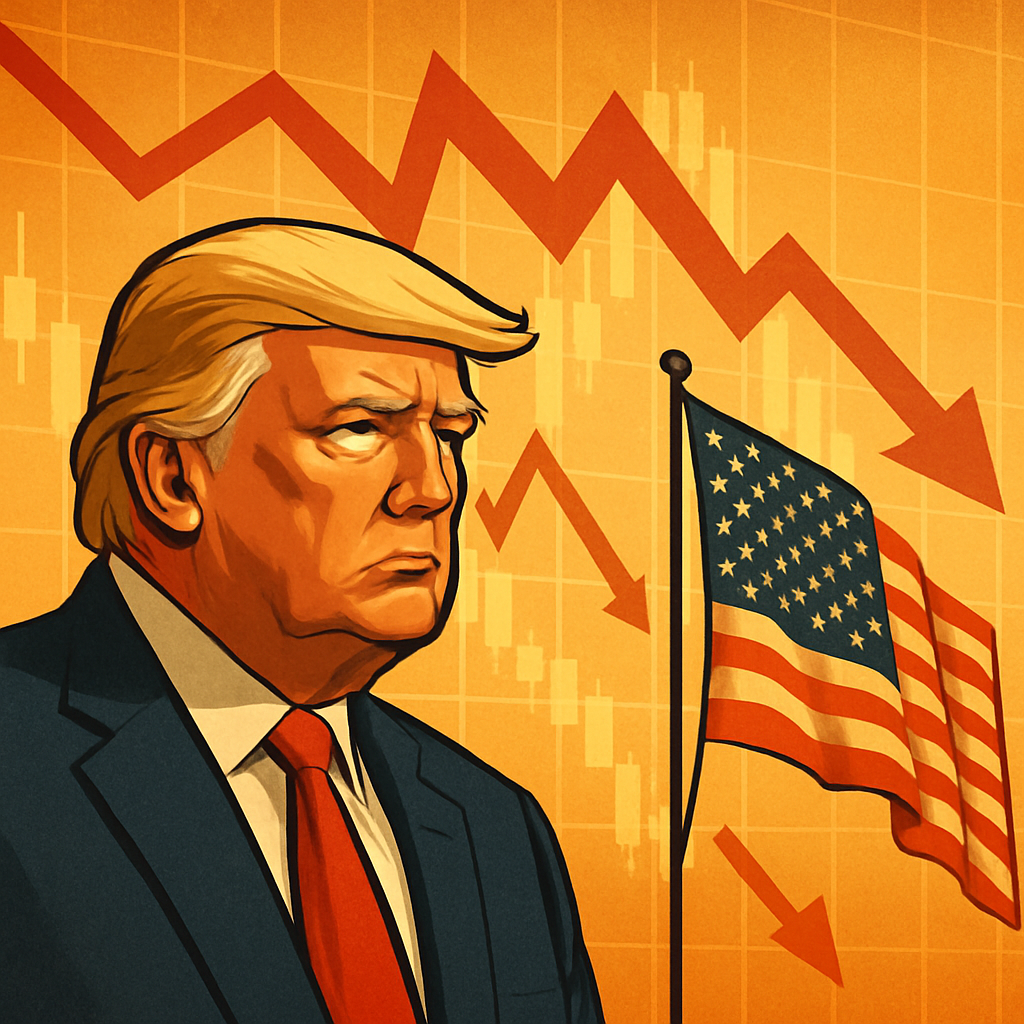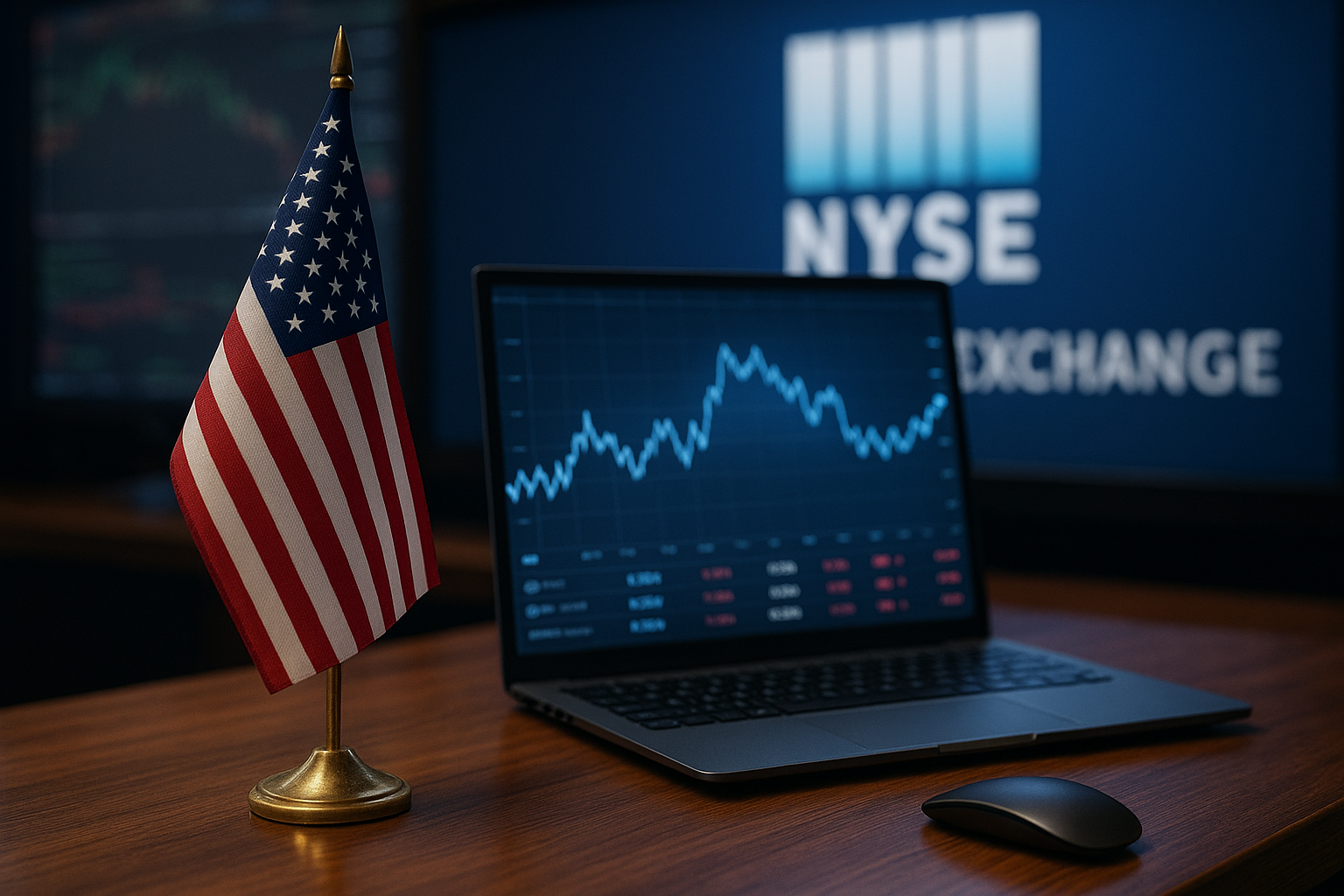Wall Street opened the week under pressure as investors reacted to rising geopolitical tensions and looming macroeconomic data. U.S. stock futures fell approximately 0.3% in early trading on Monday, July 14, after former President Donald Trump announced sweeping 30% tariffs on all imports from the European Union and Mexico, set to take effect August 1. The move marks a sharp escalation in trade rhetoric and injects fresh uncertainty into global equity markets.
While tariff headlines dominated market chatter, all eyes are also on this week’s packed economic calendar, with Consumer Price Index (CPI) and Producer Price Index (PPI) data scheduled for release, alongside a slew of major corporate earnings—especially from key financial institutions like JPMorgan Chase, Goldman Sachs, and Citigroup.
For investors, the convergence of policy risk and economic signals creates a complicated terrain—one that calls for tactical positioning, risk assessment, and a focus on defensive opportunities.
Why Markets Reacted Quickly
Trump’s tariff announcement, made during a campaign stop in Ohio over the weekend, struck a familiar yet sharper tone reminiscent of his first term’s protectionist policies. The proposed 30% blanket tariff on EU and Mexican goods targets autos, agricultural products, and electronics, raising concerns of retaliatory measures and potential impacts on global supply chains.
Markets wasted no time digesting the implications. The S&P 500, Nasdaq, and Dow Jones Industrial Average futures each opened slightly lower, with auto manufacturers, multinational industrials, and consumer goods companies taking the biggest early hits.
According to a Bloomberg Economics note, the tariffs could shave up to 0.4% off U.S. GDP growth over the next 12 months if fully implemented and met with countermeasures.
“Markets have already priced in interest rate risk, but geopolitical trade actions are harder to model,” said Alicia Park, Senior Macro Strategist at Wells Fargo. “With global growth already decelerating, broad tariffs add another layer of fragility.”
Inflation and Earnings Take Center Stage
Beyond tariffs, investors are preparing for a critical week of data that could shape the Fed’s path forward. June’s CPI data (scheduled for July 16) and PPI (July 17) will offer updated signals on whether inflationary pressures are cooling or persisting.
Wall Street is looking for headline CPI to come in at 3.1% year-over-year, slightly lower than May’s 3.3%, but sticky services inflation remains a concern.
At the same time, Q2 earnings season kicks into gear, with banks in the spotlight. Analysts expect mixed results as loan growth stagnates and higher interest rates weigh on consumer credit demand.
“Bank earnings will give us an early read on credit quality, consumer resilience, and margin compression,” said Morgan Stanley’s equity research note. “This is where defensive value starts to matter.”
Key Investment Insight: Embrace Defensive Posturing
Given the twin forces of trade risk and economic data volatility, now is not the time for broad-based risk-on exposure. Instead, defensive sectors like utilities, healthcare, and consumer staples may offer greater stability through uncertainty.
Also consider U.S.-centric companies with limited international revenue exposure—especially small-cap stocks or domestic REITs—which may be less sensitive to trade disruptions.
Other investment strategies to consider:
- Dividend-paying stocks with low volatility ratings
- Bond-proxy equities as yields stabilize (e.g., telecoms, real estate)
- Gold and commodities as inflation hedges amid potential currency disruptions
ETF watchers may consider instruments like Vanguard Utilities ETF (VPU) or iShares U.S. Healthcare Providers ETF (IHF) to gain diversified exposure to defensives.
What to Watch This Week
Investors should stay closely tuned to:
- Confirmation or revisions to Trump’s tariff implementation timeline
- Any official response from EU or Mexico trade officials
- July CPI and PPI releases for clues on Fed direction
- Earnings from major U.S. banks and guidance on 2H 2025
- Sector-specific moves, especially autos, consumer goods, and financials
Volatility is likely to persist throughout the week. The CBOE Volatility Index (VIX) rose 6% intraday, suggesting rising investor unease.
Stay Ahead with MoneyNews.Today
As headlines shift from economic resilience to global risk recalibration, investors must balance opportunity with caution. Whether it’s tariffs, inflation, or earnings, understanding the signals beneath the noise is critical.
Stay with MoneyNews.Today for the latest market-moving updates, data-driven insights, and actionable analysis that help you navigate today’s complex investment landscape with confidence.





